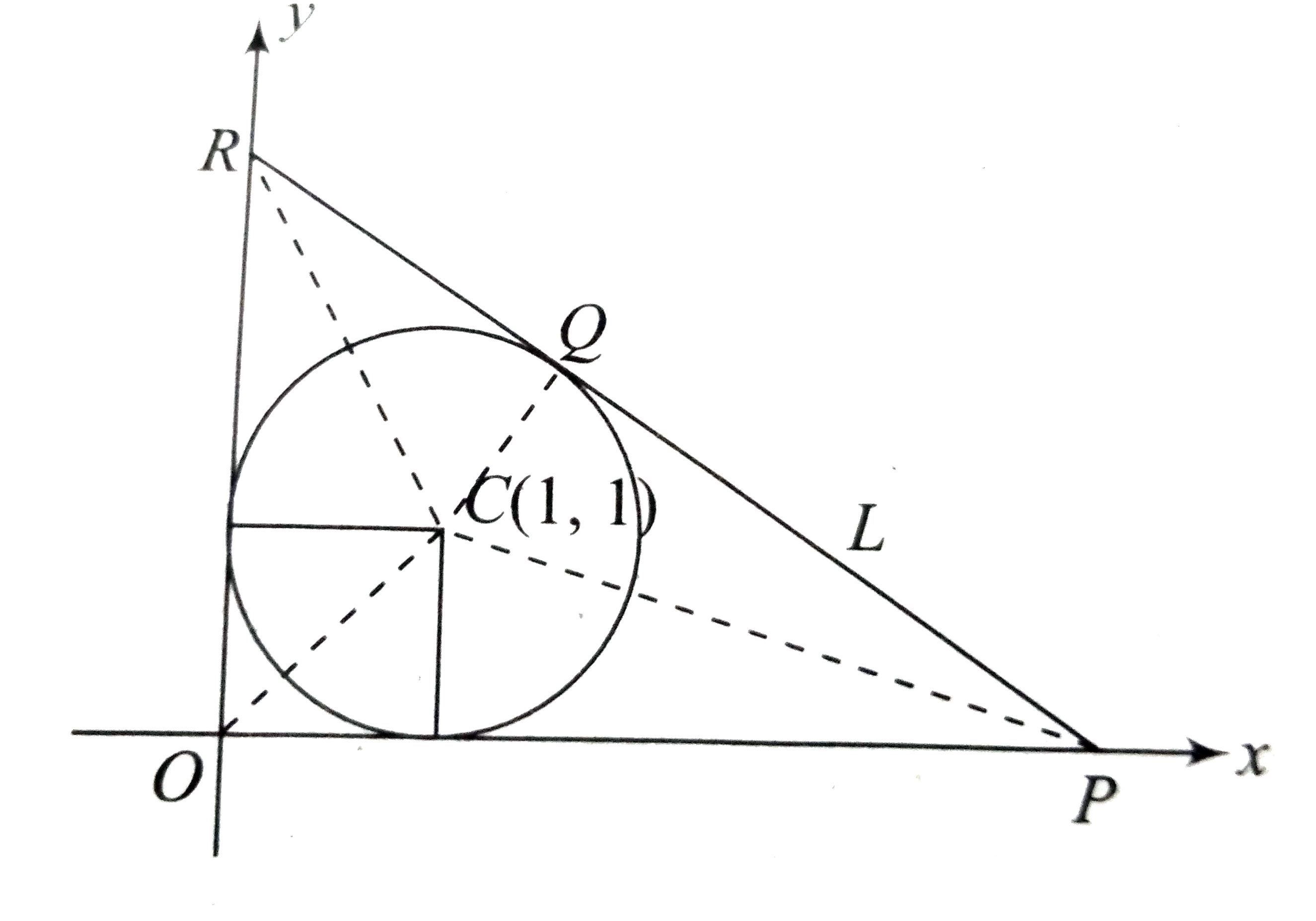f(x,y)=x2+y2+2ax+2by+c=0 represents a circle. If f(x,0)=0 has equal roots, each being 2, and f(0,y)=0 has 2 and 3 as its roots, then the center of the circle is Solution in Bengali
(2,5/2)
Data are not sufficient
(−2,−5/2)
Data are inconsistent.
The correct Answer is:4
x2+2ax+c=(x−2)2
or −2a=4,c=4
or a=−2,c=4
y2+2by+c=(y−2)(y−3)
or −2b=5,c=6
or b=−52,c=6
Clearly, the data are not consistent.
Topper's Solved these Questions
- CIRCLE BOOK - CENGAGE PUBLICATIONCHAPTER - CIRCLE EXERCISE - Multiple Correct Anser Type
29 Videos
- CIRCLE BOOK - CENGAGE PUBLICATIONCHAPTER - CIRCLE EXERCISE - Linked Comprehension Type (For Problem 1-3)
3 Videos
- CIRCLE BOOK - CENGAGE PUBLICATIONCHAPTER - CIRCLE EXERCISE - CONCEPT APPLICATION EXERCISE 4.17
2 Videos
- BINOMIAL THEOREMBOOK - CENGAGE PUBLICATIONCHAPTER - BINOMIAL THEOREMEXERCISE - Comprehension
11 Videos
- CIRCLESBOOK - CENGAGE PUBLICATIONCHAPTER - CIRCLESEXERCISE - Comprehension Type
8 Videos
Similar Questions
about to only mathematics
View SolutionEach side of a square is of length 6 units and the centre of the square Is ( - 1, 2). One of its diagonals is parallel to x+y=0. Find the co-ordinates of the vertices of the square.
View SolutionThree concentric circles of which the biggest is x2+y2=1, have their radii in A.P If the line y=x+1 cuts all the circles in real and distinct points. The interval in which the common difference of the A.P will lie is:
View SolutionConsider a G.P. with first term (1+x)n, |x|<1, common ratio 1+x2 and number of terms (n+1). Let 'S' be sum of all the terms of the G.P., then
The coefficient of xn is 'S' is
View Solution
In the diagram as shown, a circle is drawn with centre C(1,1) and radius 1 and a line L. The line L is tangent to the circle at Q. Further L meets the y-axis at R and the x-axis at P in such a way that the angle OPQ equals θ where 0<θ<π2.
Coordinate of Q is
View Solutionf(x,y)=x2+y2+2ax+2by+c=0 represents a circle. If f(x,0)=0 has equal roots, each being 2, and f(0,y)=0 has 2 and 3 as its roots, then the center of the circle is (2,52) (b) Data are not sufficient (−2,−52) (d) Data are inconsistent
View SolutionIf for a continuous function f,f(0)=f(1)=0,f'(1)=2 and y(x)=f(e^(x))e^(f(x)) ,then y'(0) is equal to a.1 b.2 c.0 d.none of these
View SolutionIf y=f(x)=ax^(2)+2bx+c=0 has Imaginary roots and 4a+4b+c<0 then
View SolutionSuppose f(x,y)=0 is the equation of a circle such that f(x,1)=0 has equal roots (each equal to 2) and f(1,x)=0 also has equal roots (each equal to zero). The equation of circle is
View SolutionLet f(x,y)=0 be the equation of a circle. If f(0,λ)=0 has equal roots λ=1,1andf(λ,0)=0 has roots λ=12,2, then the centre of the circle is
View SolutionLet f(x,y)=0 be the equation of circle.If f(0,λ)=0 has equal roots λ=1,1 and f(λ,0)=0 has roots λ=15,5 ,then the radius of the circle
View SolutionLet f(x,y)=0 be the equation of a circle. If f(0,λ)=0 has equal roots λ=1,1andf(λ,0)=0 has roots λ=15,5, then the radius of the circle is
View Solutionf(x,y)=x2+y2+2ax+2by+c=0 represents a circle. If f(x,0)=0 has equal roots, each being 2, and f(0,y)=0 has 2 and 3 as its roots, then the center of the circle is (a) (2,52) (b) Data is not sufficient (c) (−2,−52) (d) Data is inconsistent
View Solutionf(x,y)=x2+y2+2ax+2by+c=0 represents a circle. If f(x,0)=0 has equal roots, each being 2, and f(0,y)=0 has 2 and 3 as its roots, then the center of the circle is
View SolutionLet f(x,y) =0 be the equation of a circle. If f (0, lamda)=0 has equal roots lamda=1,1 and f (lamda, 0 ) =0 has roots lamda =1/2 ,2, then the centre of the circle is
View SolutionIf y=(f0f0f)(x)andf(0)=0,f'(0)=2 then y'(0) is equal to
View Solution
